#electress of hesse
Explore tagged Tumblr posts
Text

Portrait of Princess Augusta Von Hessen-Kassel
Artist: Friedrich Bury (German, 1763–1823)
Date: c. 1815
Medium: Oil on canvas
Collection: National Museum in Warsaw, Warsaw, Poland
Description
Augusta of Prussia (Christine Friederike Auguste; 1 May 1780 – 19 February 1841) was a German salonist, painter, and Electress consort of Hesse by marriage to William II, Elector of Hesse. She was the third daughter and fifth child of Frederick William II of Prussia and Frederika Louisa of Hesse-Darmstadt.
#portrait#princess augusta von hessen kassel#princess augusta of prussia#german royalty#german princess#landscape#chair#princess of prussia#three quartr length#sitting#red gown#velvet hat with plume#pearl neclace#golden chair#draped curtain#statues#distant landscape#german history#german monarchy#german empire#painting#oil on canvas#fine art#oil painting#artwork#german culture#german art#friedrich bury#german painter#european art
4 notes
·
View notes
Text
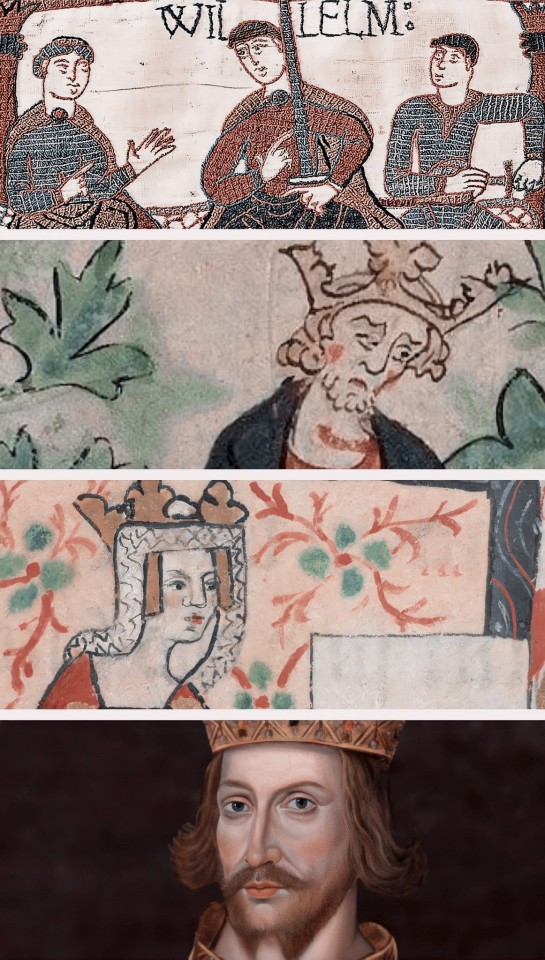
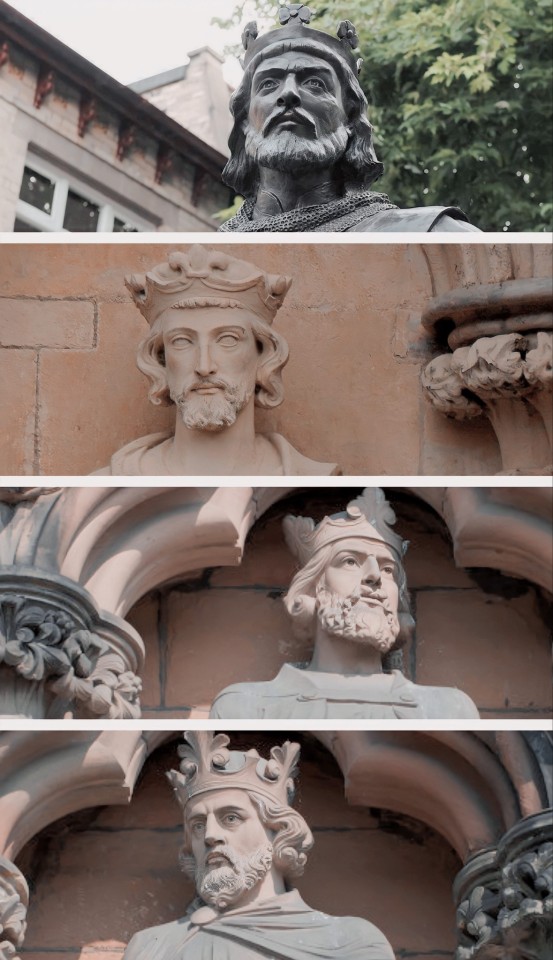


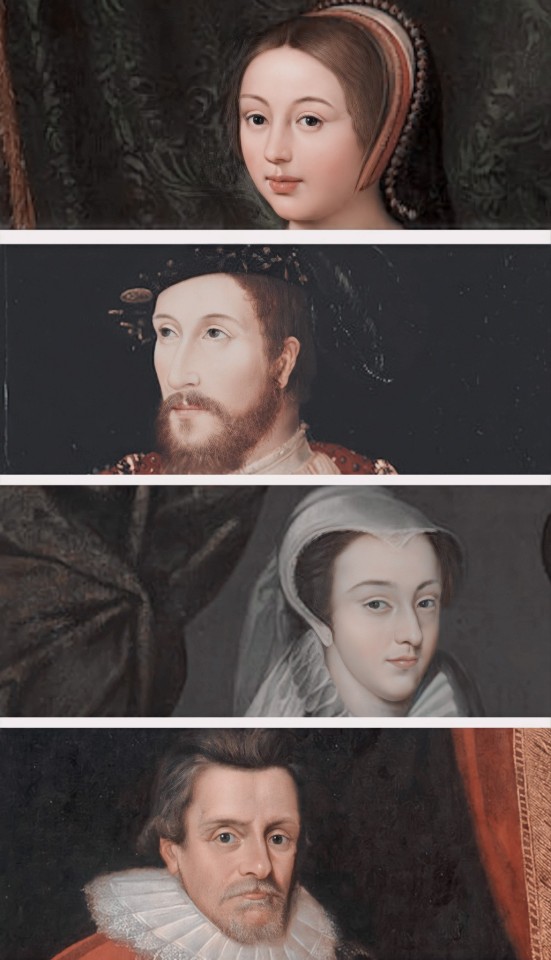

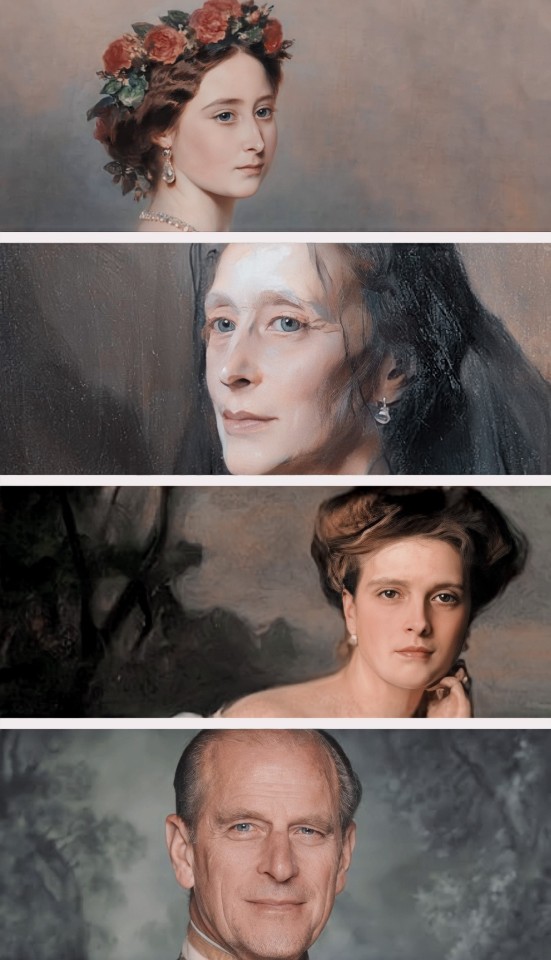

⋆ William, The Conqueror to Prince Louis of Wales ⋆
⤜ William I is Prince Louis of Wales' 25th Great-Grandfather via his paternal line through Prince Philip
William I of England
Henry I of England
Empress Matilda
Henry II of England
John of England
Henry III of England
Edward I of England
Edward II of England
Edward III of England
Lionel of Antwerp, Ist Duke of Clarence
Philippa Plantagenet, Vth Countess of Ulster
Roger Mortimer, IVth Earl of March
Anne Mortimer
Richard Plantagenet, IIIrd Duke of York
Edward IV of England
Elizabeth of York
Margaret Tudor, Queen of Scotland
James V, King of Scotland
Mary Stewart, Queen of Scotland
James I of England
Elizabeth Stuart, Queen of Bohemia
Sophia, Electress of Hanover
George I of Great Britain
George II of Great Britain
Frederick, Prince of Wales
George III of the United Kingdom
Prince Edward Augustus, Duke of Kent and Strathearn
Victoria of the United Kingdom
Princess Alice of the United Kingdom, Grand Duchess of Hesse
Princess Victoria of Hesse and by Rhine
Princess Alice of Battenberg
Prince Philip of Greece and Denmark
King Charles III of the United Kingdom
William, The Prince of Wales
Prince Louis of Wales
#royal line from william i#the british royal line#british royal family#british royals#royalty#royals#brf#british royalty#history#historical royals#house of york#house of tudor#house of plantagenet#royal#medieval ages#william the conqueror#king charles iii#prince william#the prince of wales#prince of wales#queen victoria#mary queen of scots#prince philip#duke of edinburgh#house of stuart#house of stewart#house of windsor#elizabeth of york#prince louis of wales#prince louis
128 notes
·
View notes
Text


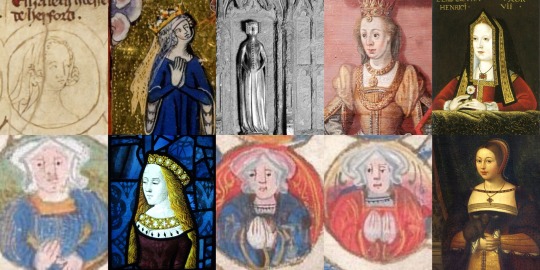
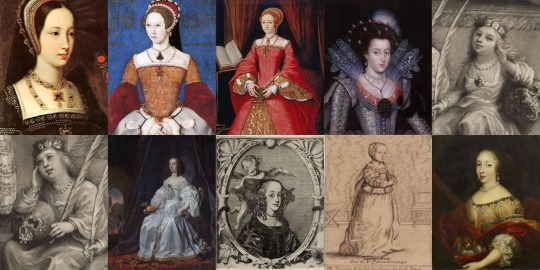
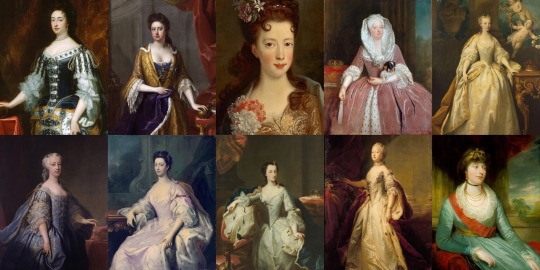
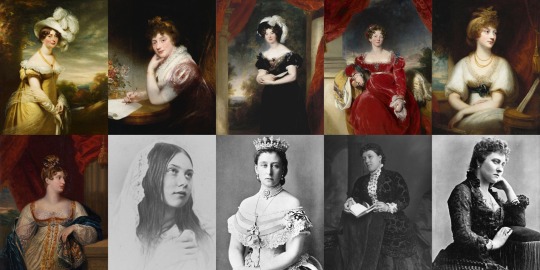

Every English Princess Ever
You’ve heard of Every Queen of England Ever, now I present to you another product that proves I have way too much time on my hands! If you notice any mistakes, please point them out to me kindly. I am sorry I do not know everything, but there is no reason to be rude. 😁
Æthelswith - Daughter of Æthelwulf and his first wife Osburh. She married King Burgred of Mercia in 853, making her the Queen of Mercia.
Æthelflæd - Daughter of Alfred the Great and Ealhswith. When her husband Æthelred, Lord of Mercians died in 911, she became Lady of the Mercians, and reigned for seven years.
Æthelgifu - Daughter of Alfred the Great and Ealhswith. When Alfred founded Shaftesbury Abbey in 890, he made her its first abbess.
Ælfthryth - Daughter of Alfred the Great and Ealhswith. Her marriage to Baldwin II, Count of Flanders made her Countess of Flanders.
Eadgifu - Daughter of Edward the Elder and his second wife Ælfflæd. She was Queen of West Francia by her marriage to Charles III.
Eadhild - Daughter of Edward the Elder and his second wife Ælfflæd. She married Hugh, Duke of the Franks in 937.
Eadgyth - Daughter of Edward the Elder and his second wife Ælfflæd. She married Otto in 930, who became Otto I, King of Germany in 936, also making her Queen of Germany.
Eadburh - Daughter of Edward the Elder and his third wife Eadgifu. She lived her life as a nun.
Godgifu - Daughter of Æthelred the Unready and his second wife Emma of Normandy. Her marriage to Eustace II, Count of Boulogne made her Countess of Boulogne.
Gunhilda - Daughter of Cnut the Great and his second wife Emma of Normandy. She became Queen of Germany when she married Henry III.
Gytha - Daughter of Harold II and Edith Swanneck. She was Princess of Rus from her marriage to Vladimir II Monomakh.
Adeliza - Daughter of William the Conqueror and Matilda of Flanders.
Cecilia - Daughter of William the Conqueror and Matilda of Flanders. She was entered into the Abbey of the Holy Trinity of Caen at a young age, and became Abbess in 1112.
Constance - Daughter of William the Conqueror and Matilda of Flanders. She became Duchess of Brittany when she married Alan IV, Duke of Brittany.
Adela - Daughter of William the Conqueror and Matilda of Flanders. She was Countess of Blois by her marriage to Stephen, Count of Blois, and was regent of Blois two times.
Empress Matilda - Daughter of Henry I and Matilda of Scotland. She became Holy Roman Empress in 1114, and acted as Queen of England from 1141 to 1148, but was disputed.
Marie I - Daughter of Stephen and Matilda I, Countess of Boulogne. When her brother William I, Count of Boulogne died childless in 1159, Marie succeeded him as the Countess of Boulogne.
Matilda - Daughter of Henry II and Eleanor of Aquitaine. She was Duchess of Saxony and Bavaria from her marriage to Henry the Lion.
Eleanor - Daughter of Henry II and Eleanor of Aquitaine. She became Queen of Castile and Toledo when she married Alfonso VIII.
Joan - Daughter of Henry II and Eleanor of Aquitaine. She was Queen of Sicily by her marriage to William II until his death in 1189, and became Countess of Toulouse when she married Raymond VI in 1196.
Joan - Daughter of John and Isabella of Angoulême. She was Queen of Scotland by her marriage to Alexander II.
Isabella - Daughter of John and Isabella of Angoulême. She was Holy Roman Empress and Queen of Sicily and Germany by her marriage to Frederick II.
Eleanor - Daughter of John and Isabella of Angoulême. She was Countess of Pembroke by her first marriage to William Marshal, 2nd Earl of Pembroke, and Countess of Leicester by her second marriage to Simon de Montfort, 6th Earl of Leicester.
Margaret - Daughter of Henry III and Eleanor of Provence. She was Queen of Scotland by her marriage to Alexander III.
Beatrice - Daughter of Henry III and Eleanor of Provence. (Her wikipedia says she was Countess of Richmond, which I’m not sure is true or not. Her husband was the Duke of Brittany, but it is possible she somehow inherited the title in her own right).
Katherine - Daughter of Henry III and Eleanor of Provence. She passed away at the age of three.
Eleanor - Daughter of Edward I and Eleanor of Castile. She was Countess of Bar by her marriage to Henry III, Count of Bar.
Joan of Acre - Daughter of Edward I and Eleanor of Castile. She was Countess of Hertford and Gloucester by her first marriage to Gilbert de Clare, 7th Earl of Gloucester and 6th Earl of Hertford.
Margaret - Daughter of Edward I and Eleanor of Castile. She was Duchess of Brabant, Lothier and Limburg by her marriage to John II.
Mary of Woodstock - Daughter of Edward I and Eleanor of Castile. She was a nun at Amesbury Priory.
Elizabeth of Rhuddlan - Daughter of Edward I and Eleanor of Castile. She was Countess of Holland by her first marriage to John I, and Countess of Hereford by her second marriage to Humphrey de Bohun, 4th Earl of Hereford.
Eleanor of Woodstock - Daughter of Edward II and Isabella of France. She was Duchess of Guelders by her marriage to Reginald II, and was regent of Guelders while her son was still young.
Joan of the Tower - Daughter of Edward II and Isabella of France. She got her name from being born in the Tower of London. Joan was Queen of Scotland by her marriage to David II.
Isabella - Daughter of Edward III and Philippa of Hainault. She was Countess of Bedford and Lady of Coucy by her marriage to Enguerrand VIII, and was made a Lady of the Garter in 1376.
Joan - Daughter of Edward III and Philippa of Hainault. She died during the Black Death at the age of fourteen.
Mary of Waltham - Daughter of Edward III and Philippa of Hainault. She was Duchess of Brittany by her marriage to John IV, Duke of Brittany, and was made a Lady of the Garter in 1378. She died young at the age of sixteen.
Margaret of Windsor - Daughter of Edward III and Philippa of Hainault. She was Countess of Pembroke by her marriage to John Hastings, 2nd Earl of Pembroke. Margaret died young at the age of fifteen.
Blanche of Lancaster - Daughter of Henry IV and Mary de Bohun. She was Electress Palatine by her marriage to Louis III, Electress Palatine.
Philippa of Lancaster - Daughter of Henry IV and Mary de Bohun. She was Queen of Denmark, Sweden and Norway by her marriage to Eric III, VIII & XIII.
Elizabeth of York - Daughter of Edward IV and Elizabeth Woodville. She was Queen of England by her marriage to Henry VII.
Mary of York - Daughter of Edward IV and Elizabeth Woodville. She died at the age of fourteen.
Cecily of York - Daughter of Edward IV and Elizabeth Woodville. She was First Lady of the Bedchamber to her sister, Elizabeth of York, from 1485 to 1487. Cecily was Viscountess Welles by her marriage to John Welles, 1st Viscount Welles.
Margaret of York - Daughter of Edward IV and Elizabeth Woodville. She died at just eight months old.
Anne of York - Daughter of Edward IV and Elizabeth Woodville. She was First Lady of the Bedchamber to her sister, Elizabeth of York, from 1487 to 1494.
Catherine of York - Daughter of Edward IV and Elizabeth Woodville. She was Countess of Devon by her marriage to William Courtenay, 1st Earl of Devon.
Bridget of York - Daughter of Edward IV and Elizabeth Woodville. She was a nun at Dartford Priory.
Margaret Tudor - Daughter of Henry VII and Elizabeth of York. She was Queen of Scotland by her marriage to James IV of Scotland.
Elizabeth Tudor - Daughter of Henry VII and Elizabeth of York. She died at the age of three.
Mary Tudor - Daughter of Henry VII and Elizabeth of York. She was Queen of France by her first marriage to Louis XII of France, and Duchess of Suffolk by her second marriage to Charles Brandon, 1st Duke of Suffolk.
Mary I - Daughter of Henry VIII and Catherine of Aragon. She was Queen of England from 1553 to 1558, and Queen of Spain by her marriage to Philip II of Spain.
Elizabeth I - Daughter of Henry VIII and Anne Boleyn. She was Queen of England from 1558 to 1603.
Elizabeth Stuart - Daughter of James VI & I and Anne of Denmark. She was Electress Palatine and Queen of Bohemia by her marriage to Frederick V.
Margaret Stuart - Daughter of James VI & I and Anne of Denmark. She died at the age of one year old.
Mary Stuart - Daughter of James VI & I and Anne of Denmark. She died at the age of two years old.
Sophia Stuart - Daughter of James VI & I and Anne of Denmark. She lived for just one day.
Mary - Daughter of Charles I and Henrietta Maria. She was Princess of Orange and Countess of Nassau by her marriage to William II, Prince of Orange.
Elizabeth Stuart - Daughter of Charles I and Henrietta Maria. She died at the age of fourteen.
Anne Stuart - Daughter of Charles I and Henrietta Maria. She died at the age of three.
Henrietta - Daughter of Charles I and Henrietta Maria. She was Duchess of Orléans by her marriage to Philippe I, Duke of Orléans.
Mary II - Daughter of James II & VII and Anne Hyde. She was Queen of England from 1689 to 1694.
Anne - Daughter of James II & VII and Anne Hyde. She was Queen of England and Great Britain from 1702 to 1714.
Louisa Maria Stuart - Daughter of James II & VII and Mary of Modena. She died at the age of nineteen.
Sophia Dorothea of Hanover - Daughter of George I and Sophia Dorothea of Celle. She was Queen of Prussia and Electress Brandenburg by her marriage to Frederick William I of Prussia.
Anne - Daughter of George II and Caroline of Ansbach. She was Princess of Orange by her marriage to William IV, Prince of Orange.
Amelia of Great Britain - Daughter of George II and Caroline of Ansbach.
Caroline Elizabeth of Great Britain - Daughter of George II and Caroline of Ansbach.
Mary of Great Britain - Daughter of George II and Caroline of Ansbach. She was Landgravine of Hesse-Kassel by her marriage to Frederick II, Landgrave of Hesse-Kassel.
Louise of Great Britain - Daughter of George II and Caroline of Ansbach. She was Queen of Denmark and Norway by her marriage to Frederick V of Denmark.
Charlotte - Daughter of George III and Charlotte of Mecklenburg-Strelitz. She was Duchess, Electress and Queen of Württemberg by her marriage to Frederick I of Württemberg.
Augusta Sophia - Daughter of George III and Charlotte of Mecklenburg-Strelitz.
Elizabeth - Daughter of George III and Charlotte of Mecklenburg-Strelitz. She was Landgravine of Hesse-Homburg by her marriage to Frederick VI, Landgrave of Hesse-Homburg.
Mary - Daughter of George III and Charlotte of Mecklenburg-Strelitz. She was Duchess of Gloucester and Edinburgh by her marriage to Prince William Frederick, Duke of Gloucester and Edinburgh.
Sophia - Daughter of George III and Charlotte of Mecklenburg-Strelitz.
Amelia - Daughter of George III and Charlotte of Mecklenburg-Strelitz.
Charlotte of Wales - Daughter of George IV and Caroline of Brunswick. She was their only child, and died before both of them.
Charlotte Augusta Louisa of Clarence - Daughter of William IV and Adelaide of Saxe-Meiningen. She died shortly after birth.
Elizabeth Georgiana Adelaide of Clarence - Daughter of William IV and Adelaide of Saxe-Meiningen. She died shortly after birth.
Victoria - Daughter of Queen Victoria and Prince Albert. She was German Empress and Queen of Prussia by her marriage to Frederick III, German Emperor.
Alice - Daughter of Queen Victoria and Prince Albert. She was Grand Duchess of Hesse and Rhine by her marriage to Louis IV, Grand Duke of Hesse.
Helena - Daughter of Queen Victoria and Prince Albert. She was Princess of Schleswig-Holstein by her marriage to Prince Christian of Schleswig-Holstein.
Louise - Daughter of Queen Victoria and Prince Albert. She was Duchess of Argyll and Viceregal of Canada by her marriage to John Campbell, 9th Duke of Argyll.
Beatrice - Daughter of Queen Victoria and Prince Albert. She was Princess of Battenberg by her marriage to Prince Henry of Battenberg.
Louise of Wales - Daughter of Edward VII and Alexandra of Denmark. She was Duchess of Fife by her marriage to Alexander Duff, 1st Duke of Fife.
Victoria of Wales - Daughter of Edward VII and Alexandra of Denmark.
Maud of Wales - Daughter of Edward VII and Alexandra of Denmark. She was Queen of Norway by her marriage to Haakon VII of Norway.
Mary of York - Daughter of George V and Mary of Teck. She was Countess of Harewood by her marriage to Henry Lascelles, 6th Earl of Harewood.
Elizabeth II - Daughter of George VI and Elizabeth Bowes-Lyon. She is Queen of the UK from 1952 to present.
Margaret Rose of York - Daughter of George VI and Elizabeth Bowes-Lyon. She was Countess of Snowdon.
Anne of Edinburgh - Daughter of Elizabeth II and Prince Philip.
#british history#historical women#empress matilda#elizabeth of york#margaret tudor#mary i#elizabeth i#british royal family
161 notes
·
View notes
Text
She Loves Me, She Loves Me Not: A Historical Cautionary Tale of Arranged Marriages
Trigger Warning: Refers to an unhappy and chaotic marriage, unhappy and chaotic home life and domestic violence. I unfortunately had some personal experiences of this that were similar with my parents when I was a young girl minus the domestic violence part thankfully. I fortunately have gotten help over that episode and I’m a lot better as a result so I am in no means trying to make light of a f**ked up historical situation.
I find it somewhat comical in a dark way that Prince Charles Louis, Elector Palatine asked his sisters Princesses Elisabeth (a philosopher) and Sophia (future Electress of Hanover who was also a gifted writer) of the Palatinate for advice on how to deal with his very turbulent and incompatible marriage with Charlotte of Hesse-Kassel, but basically stabbed his maternal uncle King Charles I of England in the back politically. Charles Louis was reported to be very smitten with Charlotte while Charlotte didn’t feel the same way about Charles Louis. Sophia took her eldest brother’s side of the conflict while Elisabeth took Charlotte’s side. Not surprisingly, this made the situation at home more awkward and chaotic. Sadly, Charles Louis responded to Charlotte’s jealousy and tantrums by hitting her. (Note: I get Charlotte was not the easiest person to live with, but responding with violence is a step too far. )Things were so bad that Princess Elisabeth Charlotte, the unhappy couple’s daughter, was sent away to live with Sophia after the latter’s marriage in Hanover. This is the same Elisabeth Charlotte who became Duchess of Orleans and the sister-in-law of King Louis XIV of France. As for the son, Charles II, Elector Palatine, unfortunately stayed and grew up weak and timid.
Charles Louis’s resolution to this toxic mess was to make it more messier. He had an affair with Charlotte’s lady-in-waiting named Luise von Degenfled (despite her refusing his advances at first, but eventually gave in), divorced Charlotte and Luise became his second wife. The big problem was Charlotte never believed that she and Charles Louis were divorced so Charles Louis’s second marriage was considered bigamous by many.
Now here’s the strange part for me at least. Before the affair and eventual second marriage took place, Prince Rupert of the Rhine, Charles Louis’ and Elisabeth’s younger brother and Sophia’s older brother, fell head over heels with Luise von Degenfled. One of Rupert’s love letters accidentally got into the hands of Charlotte and she was not pleased when the mistake was explained. As with Luise, she was completely uninterested in Rupert. Not surprisingly, relations between Charles Louis and Rupert deteriorated so badly that they were on awful terms when Rupert left the Palatinate and he never visited there again in his lifetime.
With historical stories like these, I am glad I live in a era were marriage (especially arranged marriages) are no longer a high priority for the most part. I’m not saying that I don’t believe in marriage nor romantic relationships which I strongly do, but just not with the wrong person.
I applaud you if your head is not spinning after reading this historical tidbit.
And on a positive note: Happy Valentine’s Day and Be safe! 💕
Source: Goldstone, Nancy. Daughters of the Winter Queen: Four Remarkable Sisters, the Crown of Bohemia, and the Enduring Legacy of Mary, Queen of Scots. 2018.
5 notes
·
View notes
Photo




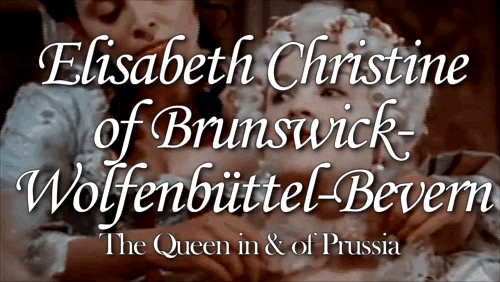

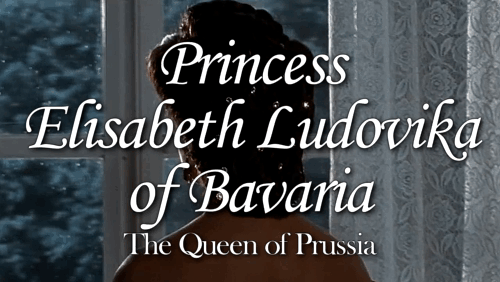


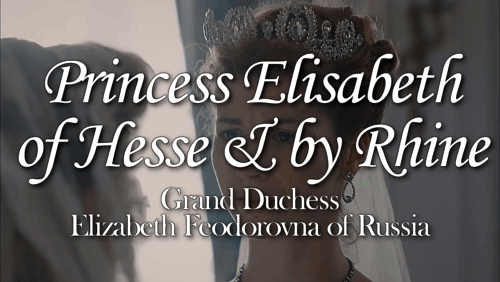
Common Royal & Noble Names: Elisabeth / Elizabeth
Elizabeth of Pomerania, Holy Roman Empress
Elisabeth “Isabeau” of Bavaria, The Queen of France
Elizabeth Stuart, The Queen of Bohemia & Electress Palatine
Elisabeth Christine of Brunswick-Wolfenbüttel, Holy Roman Empress
Elisabeth Christine of Brunswick-Wolfenbüttel-Bevern, The Queen in & of Prussia
Elisabeth of Mecklenburg-Schwerin, Princess of Brunswick-Lüneburg aka Grand Duchess Anna Leopoldovna of Russia
Princess Elisabeth Ludovika of Bavaria, The Queen of Prussia
Elisabeth in Bavaria, The Empress of Austria & Apostolic Queen of Hungary
Princess Elisabeth of Wied, The Princess & Queen of Romania
Princess Elisabeth of Hesse & by Rhine, Grand Duchess Elizabeth Feodorovna of Russia
#historyedit#women in history#period drama#perioddramaedit#historic women#Empress Elisabeth of Austria-Hungary#Elisabeth in Bavaria#Princess Elisabeth of Hesse and by Rhine#Princess Elisabeth of Hesse#Grand Duchess Elizabeth Feodorovna of Russia#Princess Elisabeth of Wied#Princess Elisabeth of Romania#Queen Elisabeth of Romania#Princess Elisabeth Ludovika of Bavaria#Queen Elisabeth Ludovika of Prussia#Elisabeth of Mecklenburg-Schwerin#Princess Elisabeth of Brunswick-Lüneburg#Elisabeth Christine of Brunswick-Wolfenbüttel-Bevern#Elisabeth Christine of Brunswick-Wolfenbüttel#queen elisabeth christine of prussia#holy roman empress elisabeth christine#Holy Roman Empress Elizabeth#Elizabeth of Pomerania#Elizabeth Stuart#Queen Elizabeth of Bohemia#Electress Palatine Elizabeth#Elisabeth of Bavaria#queen elisabeth of france#queen isabeau of france#noble names
204 notes
·
View notes
Text
January 13

[1334] Henry II of Castile, King of Castile and León (1369-79), born in Seville, Spain.
[1505] Joachim II Hector, Elector of Brandenburg (1535-71), born in Cölln, Germany.
[1610] Archduchess Maria Anna of Austria, Electress of Bavaria by marriage to Maximilian I, Elector of Bavaria, born in Graz, Duchy of Styria.
[1865] Princess Marie of Orléans, French Princess by birth and Danish Princess by marriage to Prince Valdemar, born in Ham, London, England.
[1938] Tord Grip, Swedish football player and manager, born in Ytterhogdal, Sweden.
[1939] Jacek Gmoch, Polish football player, trainer and manager, born in Pruszków, Poland.
[1947] Carles Rexach, Spanish-Catalan football winger and manager, born in Pedralbes, Barcelona, Spain.
[1960] Takis Lemonis, Greek footballer and manager, born in Colonus, Athens, Greece.
[1962] Trace Adkins, American country singer and actor, born in Sarepta, Louisiana, United States.
[1966] Patrick Dempsey, American actor, born in Lewiston, Maine, United States.
[1968] Mike Whitlow, English football defender and coach (U-18 at League Two club Mansfield Town), born in Northwich, England.
[1970] Frank Kooiman, Dutch football goalkeeper, born in Vlaardingen, Netherlands.
[1977] Orlando Bloom, English actor, born in Canterbury, England.
[1980] Akira Kaji, Japanese football defender, born in Minamiawaji, Hyogo, Japan.
[1980] Nils-Eric Johansson, Swedish football defender, born in Stockholm, Sweden.
[1989] Bryan Arguez, American soccer defensive midfielder, born in in Miami, Florida, United States.
[1990] Liam Hemsworth, Australian actor, born in Melbourne, Victoria, Australia.

[703 AD] Empress Jitō, the 41st monarch of Japan, dies.
[858 AD] Æthelwulf, King of Wessex (839-858), dies.
[888 AD] Charles III, the Fat (Charles Le Gros) Emperor of the Carolingian Empire from 881-888, dies at about 49.
[1330] Frederick I (III), the Fair, Duke of Austria and Styria (from 1308) as well as the anti-King of Germany (1314-1325) and then the co-King until his death.
[1363] Meinhard III, Count of Gorizia-Tyrol, dies.
[1735] Princess Polyxena of Hesse-Rheinfels-Rotenburg, second wife of Charles Emmanuel, Prince of Piedmont, Queen of Sardinia (1730-35), dies at 28.
[1797] Duchess Elisabeth Christine of Brunswick-Wolfenbüttel-Bevern, Queen of Prussia and Electress of Brandenburg as the wife of Frederik II the Great, dies at 81.
[1879] Henry the Navigator, Prince of the Netherlands, 3rd son of King William II of the Netherlands, dies at 58.
[1932] Sophia of Prussia, Queen Consort of the Hellenes (1913-17) and (1920-22) as the wife of Constantine I of Greece, dies at 61.
[2004] Harold Shipman (Doctor Death), British GP and prolific serial killer, commits suicide by hanging himself in his cell at HM Prison Wakefield at 57.
[2014] Bobby Collins, Scottish football midfielder and manager, dies at 82.
[2017] Antony Armstrong-Jones, Lord Snowdon, British photographer and ex-husband of Princess Margaret, dies at 86.
#on this day in history#on this day#otdih#otd#january#football history#football#birthdays#rest in peace#january 13#carles rexach#trace adkins#patrick dempsey#orlando bloom#nils-eric johansson#bryan arguez#liam hemsworth#æthelwulf#charles iii the fat#charles le gros#polyxena#harold shipman#doctor death#antony armstrong-jones#lord snowdon
0 notes
Photo

Charlotte of Hesse-Kassel, Electress Palatine (20 November 1627 - 26 March 1686)
#charlotte of hesse-kassel#electress palatine#daughter of william v landgrave of hesse-kassel#wife of charles i louis elector palatine#history#women in history#17th century#art
0 notes
Text
The Continuation of Mr. Rapin’s History of England, 1761
Page vii: Footnote: In the proclamation for calling his first parliament, he arbitrarily prescribed as well to the electors as elected, and subjected both to severe penalties, in case any return should be made contrary to his proclamation. And in a speech to the parliament expressly tells them, “As it is blasphemy to dispute what God may do, so is it sedition in subjects to dispute what a king may do in the height of “his power.” So possessed was the king (says Burnet) of a divine right in all kings, that he could not bear that even an elective and limited king should be called in question by his subjects, and therefore would never give prince Frederic, his son-in-law, the title of king, nor lend him any assistance for the support of his new dignity. It was also usual with him, from the same principle, to call the Dutch, rebels, for endeavoring to shake off the tyrannical yoke of Spain.
Page xlvi: Footnote: The house of commons of the same parliament, the last day of their sitting, voted, “That the acts of parliament made in the reign of queen Elizabeth and king James, against popish recusants, ought not to be extended against protestant dissenters.” And, “That the prosecution of protestant dissenters upon the penal laws, is at this time grievous to the subject, a weakening the protestant interest, and encouragement to popery, and dangerous to the state of the kingdom.” It was also given to the members of the last parliament of this reign, as an instruction from their electors, to repeal the 35th of Elizabeth and the corporation act. By the favor thus shown them, the non-conformists (says Burnet) behaved themselves very indecently, and fell very severely upon the body of the clergy, which made the bishops and clergy apprehend, that a rebellion, and with it the pulling the church to pieces, was designed. It was easy therefore for the court to inflame the clergy, and cause them to turn their apprehensions of popery into a dread of falling again under a presbyterian government.
Page 272: But with all this, the arms of France did not prevail this summer. Three considerable armies rose up against her at once. One of 50,000 men, under the duke of Bavaria; one of 47,000, under the elector of Saxony; and the third of 51,000, commanded by the elector of Brandenburg. The duke of Lorrain was at the had of the imperial troops, who after a siege of two months, took Mentz by capitulation. The French, by their own concession, had above 900 men salon, and 14,000 wounded. The duke, sensible of the merit and bravery of the marquis dUxelles, left him master of the articles of capitulation. By the taking of Mentz, Franconia, which before lay exposed, was now covered. The elector of Brandenburg laid siege to Keiserswert, and was pursuing the attacks with vigor, when the garrison, partly French and partly Germans, dividing themselves, demanded to capitulate, and surrendered upon articles. Flushed with this success, the elector besieged Bonne, where baron d’Asfeld commanded with very good officers under him. He had eight battalions of foot, a regiment of horse, and another of dragoons. The siege, by reason of several interruptions, proved very tedious; but at last the counterscarp, and some outworks being taken by storm, the garrison surrendered after fifty-five days blockade, and twenty-six days close siege. The taking of Bonne, which laid the Rhine open as far as to Mentz, was partly owing to the duke of Lorrain, who, after the surrender of Mentz, let part of his army to the assistance of the elector of Brandenburg. The duke showed a generous regard for baron d’Asfeld who had so long and so bravely defended the place against himself and the electors of Bavaria and Brandenburg. With this siege ended the campaign on the Rhine.
Page 361: He went from thence to England, and passing through Holland, entered into a particular confidence with the prince of Orange; and being invited by the elector of Brandenburg to Berlin, was made governor of Prussia, and set at the head of all the elector’s armies. He was treated likewise by the young elector with the same regard that his father had shown him, and in 1688, was sent by him to Cleves, to command the troops, which were raised by the empire for the defense of Cologne. When the prince of Orange was almost ready for his expedition into England, the marshal obtained leave of the elector of Brandenburgh to accompany the prince in that attempt: upon whose advancement to the throne of England he was made a duke. He was a man of great calmness, application, and conduct, and thought much better than he spoke; of true judgment, exact probity, and of an humble and obliging temper. He had a thorough experience of the world; knew men and things better than any man of his profession ever did; and was as great in council as at the head of an army. In his declining years his memory very much failed, but his judgment remain true and clear to the last.
Page 411: The French were not able to draw any advantage from this success; for the Dutch repaired their losses with admirable diligence, so that prince Waldeck being reinforced by the five English regiments, which were not in the action, eight or nine thousand men from Hanover, and ten thousand more of the bishopric, of Liege, Brandenburghers and Hollanders, under count de Tilly, he joined the elector of Brandeburg with all his forces. By this conjunction the confederate army being reckoned 55,000 strong, bent their march to Genap, and so to Bois-Seigneur-Isaac. And though Luxembourg had been likewise considerably reinforced, yet he sat contented with the glory of having gained a signal victory this summer, and fortified his camp so, as not to be obliged to fight without considerable advantage. On the other hand, the states-general sent positive orders to prince Waldeck not to hazard another engagement till the fleet should be again at sea; and this restrained elector of Brandenburg, who, in conjunction with the Dutch, was superior in numbers to Luxembourg. And afterwards, when the states superseded this orders, he did not think fit to hazard his army. Such is the fate of confederate armies, when under a different direction, that when the one is willing, or at least seems to be so, the other standoff. So there was no further action in Flanders this campaign.
Page 431: Footnote: The ambassadors and foreign ministers present were those from the emperor, the count de Winditsgratz, and Berks, with the chevalier de Campecht; from the king of Spain, don Emanuel de Colona; from the king of Denmark, the count of Rebenklam and M. Centhe; from the king of Sweden, the count of Oxensterm; from the king of Poland, M. Moreau; from the Elector of Bavaria, the baron of Boomgarden and M. Prielmeyere; from the elector of Brandenburg, M. Van Diest and Smettau, from the elector of Saxony, M. Haxhausen; from the elector of Treves, the baron de Leyon, and M. Champagne; from the elector of Mentz, M. Talberg and Meyers; from the elector of Cologne, the general and baron Berusaw and M. Soelmaker; from the elector palatine, M. Hertermans; from the duke of Savoy, the count de Pielat and the president de la Tour; from the duke of Zell, M. Zieger; from the bishop of Munster, M. de Nort; from the landgrave of Hesse-Cassel, the baron Gorts, and M. Reppelaar; from the duke of Wolfembuttle, the baron Crosek; from the duke of Hanover, M. Klekk; from the duke of Holstein Gottorup, M. Turkey; and from the price of Liege, counsellor Mean.
Page 493: Flandrs lay exposed to great danger, where the feebleness of the Spanish government so exhausted and weakened the whole country, that all the strength of the confederate armies was scarce able to defend it. The Spaniards had offered to deliver it up to king William, either as he was king of England, or as he was stadtholder of the United Provinces. He knew the bigotry of the people so well, that he was convinced it was not possible to get them to submit to a Protestant government; but he proposed the elector of Bavaria, who seemed to have much heat, and an ambition of signalizing himself in that country, which was then the chief scene of the war; and he could support that government by the troops and treasure, that he might draw out of his own electorate. Besides if he governed that country well, and acquired a fame in arms, that might give him a prospect of succeeding to the crown of Spain, in the right of his electress, who, if the house of Bourbon was set aside, was next in that succession. The Spaniards agreed to this proposal; but they would not make the first offer of it to that elector, nor would he ask it; and it stuck for some time at this. But the court of Vienna adjusted the matter, by making the proposition, which the elector accepted; and was accordingly appointed governor, and the choice of him declared at Madrid, in the council of state; which put new life into those oppressed and miserable provinces.
Page 509: Some changes were likewise made in Scotland, where affairs were put into another method. Lord Tweedale was made lord chancellor of that kingdom, lord Melvill appointed lord privy seal, and most of his creatures were laid aside. But several of those who had been in Montgomery’s plot, were brought into the council and ministry. Mr. Johnston, who had been enjoy extrarordinary to the elector of Brandenburgh, was called home in February, and made joint-secretary of state for that kingdom with the lord Stair. It began soon to appear there, how ill the king was advised, when he brought in some of the plotters into the chief posts of that government.
0 notes
Photo

Augusta of Prussia, Electress Consort of Hesse.
#augusta of prussia#prussia#hohenzollern#house of hohenzollern#princess augusta of prussia#princess augusta#electress of hesse#long live the queue
16 notes
·
View notes
Photo

Augusta of Prussia, Electress of Hesse.
#Princess Augusta of Prussia#augusta of prussia#House of Hohenzollern#hohenzollern#prussia#electress of hesse#long live the queue
25 notes
·
View notes
Photo










House of Hohenzollern & Welf: Princess Elisabeth of Brandenburg
Elisabeth was born as the third child and second daughter to Elector Joachim I Nestor of Brandenburg and his wife Princess Elisabeth of Denmark, Norway and Sweden. Her siblings were Elector Joachim II Hektor of Brandenburg, Duchess Anna of Mecklenburg-Güstrow. Margrave of Brunswick-Küstrin and Margareta who was Duchess of Pomerania by her first marriage and Princess of Anhalt-Zerbst by her second one.
Elisabeth was educated in a humanist but also strictly religious fashion and had come into contact with Protestantism when her mother celebrated a mass in the protestant fashion. Elisabeth’s father was enraged that his wife might convert to the Protestant faith which got to no one less than Martin Luther himself who spoke in favour of the Electress. Some scholars think this might have impressed the young Elisabeth.
At the age of 14, Elisabeth was married to Erich I of Brunswick-Calenberg-Göttingen who was already 54 at the time. They mostly lived apart but did provide heirs for the duchy. In 1528 Elisabeth was pregnant again and there were complications. The young duchess blamed her husband’s mistress of witchcraft and demanded she shall be burned. Despite Elisabeth’s best efforts to capture the mistress she escaped. Only by the promise of a greater dower than had been promised to her in her marriage contract, Erich was able to calm his wife down. In the end, the birth of the heir Erich II went down as smoothly as it could for the time. The marriage resulted in a total of four children. Next to Erich, there were his older sister Countess Elisabeth of Henneberg and his two younger sisters Duchess Anna Maria of Prussia and High Burgravine Katharina of Bohemia.
Elisabeth met Martin Luther in 1534 when she visited her mother. Four years later a regular letter exchange began and she sent him chesse and wine regularly. He thanked her by sending mulberries, fig tree seedlings and his translation of the bible into German with a dedication to her. Elisabeth officially converted to Protestantism on April 7th, 1538. She informed Landgrave Philip I of Hesse, the husband of Christina of Saxony, in October about her conversion. Philip who was a champion of the reformation helped her to bring reformator Antonius Corvinus to her court in Münden. Elisabeth’s husband tolerated his wife’s conversion. While it was against his political alignment with the catholic Emperor, he admired the reformators boldness.
Erich died in 1540. Elisabeth, who found an ally in Elector Johann Friedrich of Saxony, a distant cousin of Christina of Saxony (they shared a great-grandfather), was able to cease the regency together with Philip of Hesse for her son. Heinrich of Brunswick-Wolfenbüttel, her late husband’s nephew, protested without success. Elisabeth’s regency lasted for five years in which is implemented the reformation in the principality. During this time, she wrote a book for a son in which she gave him guidance on how to rule in the future.
Elisabeth’s son Erich had originally been promised to Princess Anna of Hesse since they were children. But Erich fell in love with the protestant Princess Sidonie of Saxony, the sister of the future Electors Maurice and Augustus of Saxony. A year later, Elisabeth agreed to anull the engagement to Anna and allow her son to marry Sidonie, who was ten years his senior. The same year, Erich’s rule began and Elisabeth’s regency ended.
In 1546, Elisabeth married Count Poppo XII of Henneberg who was her son-in-law’s younger brother. In the following years, Elisabeth’s son turned his favor away from Protestantism and towards Catholicism again what worried her. The last ten years of her life were dominated by her fight for Protestantism. She succeeded in marrying her daughter Anna Maria to the 40 years older but protestant Duke Albrecht of Prussia. But her son married his youngest sister Katharina to the catholic Wilhelm of Rosenberg, High Burgrave of Bohemia. He gave his mother the wrong date so she arrived to late. Later Elisabeth got to know that Katharina was allowed to keep her faith and to bring a protestant priest with her. After the Battle of Sievershausen four years earlier, Heinrich of Brunswick-Wolfenbüttel had chased Elisabeth out of Münden to Hanover. In the end, she settled in her husband’s county and wrote one last book. This time it was for widows to help them deal with their grief.
Elisabeth died on May 25th, 1558, in Illmenau. It is said that she died of a broken heart. Her children honored her by ordering an epitaph to be created which was erected in 1566 in the St. Giles Chapel of the St. John's Church in Schleusingen.
// Emma Hamilton in The Tudors (2007-10)
#historyedit#German history#Reformation#1500s#women in history#historic women#European history#16th century#Women of the Reformation#House of Welf#House of Hohenzollern#Elisabeth of Brandenburg#Duchess Elisabeth of Brunswick-Calenberg-Göttingen
83 notes
·
View notes
Photo


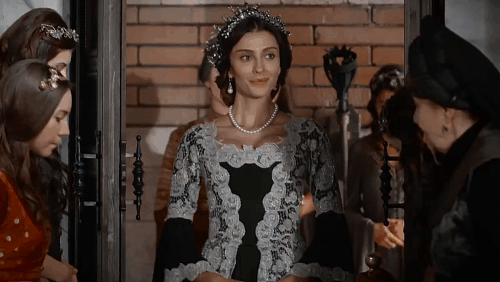
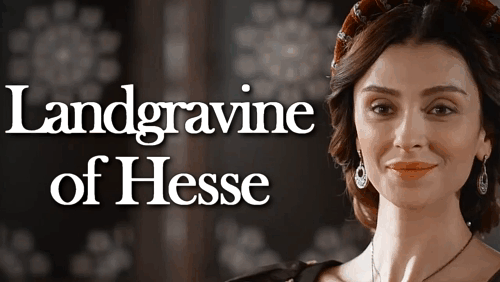






House of Wettin & of Hesse: Princess Christina of Saxony
Christina was born as the eighth of ten children to Duke George “the Bearded” of Saxony and his wife, the Polish princess Barbara Jagiellon. Her siblings were Hereditary Princes Johann and Friedrich of Saxony as well as Electoral Princess Magdalena of Brandenburg.
At the age of 17, Christina was married to Landgrave Philipp I of Hesse. It was a strictly political marriage which nevertheless resulted in 10 children being born. Their daughter were Electress Agnes of Saxony, Countess Palatine Anna of Zweibrücken, Duchess Barbara of Württemberg-Mömpelgard, Electress Palatine Elisabeth and Duchess Christine of Holstein-Gottorp. Their sons each became a Landgrave in their own right since their father decided to split the inheritance to all four sons. This way the branches Darmstadt, Kassel, Rheinfels and Marburg of the House of Hesse were established.
In 1540 Philipp decided to marry his 17-year-old mistress Margarethe von der Saale. Christina consented to her husband’s bigamy due to her view of him as her sovereign and under the condition she remain his main wife and that only her children would inherit the lands and titles of their father. This bigamy was even allowed by no one less than Martin Luther, who commented that bigamy was better than a divorce, as well as Philip Melanchthon. Even though Philipp was now also married to Margarethe, he and Christina would go on to have three more children before their sexual relationship ended.
When Philipp was captured during the Schmalkaldic War, it was Christina alongside her son Wilhelm who took over the governmental duties from 1547-49. Philipp had not named Christina as his regent officially since he feared she would not provide for his children with Margarethe. Margarethe was also not allowed at Wilhelm’s court in Kassel, even after Christina’s death, so his father’s fear was not without reason.
Christina died on April 15th, 1549, She is buried at St. Martin’s Church in Kassel.
// Özge Ulusoy in Magnificent Century (2011-14)
#historyedit#women in history#historic women#Tudor era#1500s#16th century#Christina of Saxony#Landgravine Christina of Hesse#German history#European history#House of Wettin#House of Hesse
92 notes
·
View notes
Text
Master Post - Members who married into a royal or noble house
Disclaimer: If a person married someone from the same house as they were born into, I have not listed them in this list. Please look at the list sorted by birth for them. Houses that rule(d)/reside(d) in other countries but originally came from German and/or Austrian territories and/or are generally regarded as belonging to this cultural room are listed among the German & Austrian Houses.
German & Austrian Houses
House of Babenberg
Princess Eudokia Laskarina of Nicaea, The Hereditary Duchess of Austria
Princess Theodora Angelina of Byzantium, The Duchess of Austria & Styria
Princess Theodora Komnene of Byzantium, The Duchess of Bavaria & Austria
House of Castell
Baroness Ottilie of Faber, Countess of Faber-Castell
House of Coburg (Cadet branch of the House of Wettin)
Princess Louise of Saxe-Gotha-Altenburg, The Duchess of Saxe-Coburg-Saalfeld (1st marriage)
Princess Mary of Teck, The Queen of the United Kingdom & British Dominions, The Empress of India
Queen Victoria of the United Kingdom (wife of Prince Albert of Saxe-Coburg and Gotha)
House of Faber
Ottilie Richter, Baroness of Faber
House of Habsburg (incl. Habsburg-Lorraine)
Anna Plochl, Countess of Meran
Princess Charlotte of Belgium, The Empress of Mexico, Archduchess of Austria
Infanta Eleanor of Portugal, Holy Roman Empress, The Archduchess of Austria
Eleonore Magdalene of Neuburg, Holy Roman Empress
Elisabeth in Bavaria, The Empress of Austria
Princess Elisabeth Christine of Brunswick-Wolfenbüttel, Holy Roman Empress
Queen Joanna of Castile, León and Aragon (Consort of Philip the Handsome, Archduke of Austria and The Duke of Burgundy)
Princess Maria Anna of Bavaria, The Archduchess of Inner Austria-Styria
Maria Beatrice d’Este, The Duchess of Massa & Carrara, Archduchess of Austria
Mary, The Duchess of Burgundy
Princess Sophie of Bavaria, Archduchess of Austria
Countess Sophie Chotek of Chotkowa and Wognin, The Duchess of Hohenberg
Princess Stéphanie of Belgium, The Crown Princess of Austria, Hungary and Bohemia
House of Hanover (Cadet branch of the House of Welf)
Princess Adelaide (Adelheid) of Saxe-Meiningen, The Queen of the United Kingdom and Hanover
Princess Caroline of Ansbach, The Queen of Great Britain
Princess Caroline of Brunswick-Wolfenbüttel, The Queen of the United Kingdom and Hanover
Princess Charlotte of Mecklenburg-Strelitz, The Queen of Great Britain, Ireland and Hanover
Frederica (Friederike) of Mecklenburg-Strelitz, The Queen of Hanover, The Duchess of Cumberland and Teviotdale (3rd marriage)
Princess Victoria of Saxe-Coburg-Saalfeld, The Duchess of Kent (2nd marriage)
House of Hesse
Princess Alice of Great Britain and Ireland, The Grand Duchess of Hesse and by Rhine
Princess Cecilie of Greece and Denmark, The Hereditary Grand Duchess of Hesse and by Rhine
Princess Christina of Saxony, The Landgravine of Hesse
House of Hohenlohe-Langenburg
Princess Feodora of Leininigen, The Princess of Hohenlohe-Langenburg
House of Hohenstaufen
Irene of Byzantium, The Queen of the Germans, The Duchess of Swabia
House of Hohenzollern
Princess Augusta of Saxe-Weimar-Eisenach, The German Empress
Princess Augusta Victoria (Auguste Viktoria) of Schleswig-Holstein, The German Empress
Elisabeth Christine of Brunswick-Wolfenbüttel-Bevern, The Queen of Prussia
Princess Elisabeth of Wied, The Queen & Princess of Romania
Princess Elisabeth Ludovika of Bavaria, The Queen of Prussia
Frederica (Friederike) of Mecklenburg-Strelitz, Princess Louis Charles of Prussia (1st marriage)
Princess Hermine Reuß, “German Empress”
Jadwiga Jagiellon, Electress of Brandenburg
Louise of Mecklenburg-Strelitz, The Queen of Prussia
Princess Sophia Dorothea of Hanover, The Queen in Prussia
Princess Victoria of Great Britain and Ireland, Princess Royal, The German Empress
House of La Marck
Jeanne d’Albret, The Duchess of Jülich-Cleves-Berg
House of Limburg-Luxemburg
Elizabeth of Pomerania, Holy Roman Empress
House of Nassau
Princess Sophie of Württemberg, The Queen of the Netherlands
House of Oldenburg
Princess Adelheid of Hohenlohe-Langenburg, The Duchess of Schleswig-Holstein
Princess Juliane of Brunswick-Wolfenbüttel-Bevern, The Queen of Denmark and Norway
House of Supplinburg
Richenza of Northeim, Holy Roman Empress
House of Thurn and Taxis
Helene in Bavaria, The Hereditary Princess of Thurn and Taxis
House of Welf (without the British Hanover branch)
Princess Elisabeth of Brandenburg, The Duchess of Brunswick-Calenberg-Göttingen
Elisabeth of Mecklenburg-Schwerin, Princess of Brunswick-Lüneburg aka Grand Duchess Anna Leopoldovna of Russia
House of Wettin (without the Coburg branch)
Princess Amalie Auguste of Bavaria, The Queen of Saxony
Princess Feodora of Hohenlohe-Langenburg, The Duchess of Saxe-Meiningen
Princess Maria Anna of Bavaria, The Queen of Saxony
Sibylle of Cleves, The Electress of Saxony
House of Wittelsbach
Elizabeth Stuart, The Queen of Bohemia & Electress Palatine
Kunigunde of Austria, The Duchess of Bavaria-Munich
Princess Louise d’Orléans, Princess of Bavaria
Archduchess Maria Antonia of Austria, The Electress of Bavaria
Princess Marie of Prussia, The Queen of Bavaria
The House of Württemberg
Princess Antoinette of Saxe-Coburg-Saalfeld, Duchess of Württemberg
Princess Marie Auguste of Thurn and Taxis, The Duchess of Württemberg
The Ottonians
Adelaide of Burgundy, Holy Roman Empress, Queen of Italy
Theophanu, Holy Roman Empress
Foreign Houses
House of Bourbon
Jeanne d’Albret, The Queen of Navarre and The Duchess of Vendôme
Archduchess Maria Antonia “Marie Antoinette” of Austria, The Queen of France
House of Braganza
Archduchess Maria Leopoldina, The Empress of Brazil, The Queen of Portugal and the Algarves
Byzantine Imperial Family
Konstanze “Anna” of Hohenstaufen, The Empress of Nicaea
House of Ivrea
Elisabeth “Beatrix” of Swabia, The Queen of Castile, León & Galicia
House of Lorraine
Archduchess Maria Anna of Austria, Princess of Lorraine and Bar
The Archduchess Maria Theresa (Maria Theresia) of Austria, Holy Roman Empress (marriage formed new House of Habsburg-Lorraine)
House of Medici
Archduchess Johanna of Austria, The Grand Duchess of Tuscany
House of Radziwiłł
Princess Luise of Prussia, Princess Radziwiłł
House of Romanov (incl. Romanov-Holstein-Gottrop)
Princess Alix of Hesse and by Rhine aka Empress Alexandra Feodorovna of Russia
Princess Elisabeth of Hesse and by Rhine, Grand Duchess Elizabeth Feodorovna of Russia
Princess Sophie of Anhalt-Zerbst, The Empress Regnant of Russia aka Catherine the Great
House of Tudor
Anne of Cleves, The Queen of England
House of Valois
Elisabeth (Isabeau) of Bavaria, The Queen of France
House of Vasa
Princess Maria Eleonora of Brandenburg, The Queen of Sweden
Minor Nobles
Anna Constantia of Brockdorff, The Imperial Countess of Cosel
Helene Baltazzi, The Baroness of Vetsera
Maria Anna Mozart, The Imperial Countess Berchthold
Marie Karoline of Mollard, The Imperial Countess of Fuchs to Bimbach
Sophia Botta, The Dark Countess of Hildburghausen
Sophie of Pannwitz, Countess of Voß
58 notes
·
View notes
Text
Master Post - Members by birth
Disclaimer: Houses that rule(d)/reside(d) in other countries but originally came from German and/or Austrian territories and/or are generally regarded as belonging to this cultural room are listed among the German & Austrian Houses.
German & Austrian Houses
House of Ascania
Princess Sophie of Anhalt-Zerbst aka Catherine the Great
House of Coburg (Cadet branch of the House of Wettin)
Princess Alice of the United Kingdom, The Grand Duchess of Hesse and by Rhine
Princess Antoinette of Saxe-Coburg-Saalfeld, Duchess of Württemberg
Princess Charlotte of Belgium, The Empress of Mexico, Archduchess of Austria
Princess Stéphanie of Belgium, Crown Princess of Austria, Hungary & Bohemia
Princess Victoria of Great Britain and Ireland, Princess Royal, The German Empress
Victoria of Saxe-Coburg-Saalfeld, The Princess of Leiningen, The Duchess of Kent
House of Griffin
Elizabeth of Pomerania, Holy Roman Empress
House of Habsburg
Archduchess Johanna of Austria, The Grand Duchess of Tuscany
Archduchess Maria Amalia of Austria, Holy Roman Empress, The Electress of Bavaria
Archduchess Maria Anna of Austria, Princess of Lorraine and Bar
Archduchess Maria Antonia of Austria, The Electress of Bavaria
Archduchess Maria Antonia “Marie Antoinette” of Austria, The Queen of France and Navarre
Archduchess Maria Leopoldine of Austria, The Empress of Brazil, Queen of Portugal & the Algarves
Maria Theresia, The Archduchess of Austria, Holy Roman Empress
Archduchess Sophie of Austria
House of Hanover (Cadet branch of the House of Welf)
Princess Sophia Dorothea of Hanover, The Queen in Prussia
Queen Victoria of the United Kingdom, Empress of India
House of Hesse
Princess Alix of Hesse and by Rhine, Empress Alexandra Feodorovna of Russia
Princess Elisabeth of Hesse and by Rhine, Grand Duchess Elizabeth Feodorovna of Russia
House of Hohenlohe-Langenburg
Princess Adelheid of Hohenlohe-Langenburg, The Duchess of Schleswig-Holstein
Princess Feodora of Hohenlohe-Langenburg, The Duchess of Saxe-Meiningen
House of Hohenstaufen
Elisabeth “Beatrix” of Swabia, The Queen of Castile, León & Galicia
Konstanze “Anna” of Hohenstaufen, The Empress of Nicaea
House of Hohenzollern
Princess Anna Amalia of Prussia
Princess Caroline of Ansbach, The Queen of Great Britain & Ireland, The Electress of Hanover
Princess Elisabeth of Brandenburg, The Duchess of Brunswick-Calenberg-Göttingen
Princess Luise of Prussia, Princess Radziwiłł
Princess Maria Eleonora of Brandenburg, The Queen of Sweden
Princess Marie of Prussia, The Queen of Bavaria
Princess Wilhelmine of Prussia, The Margravine of Brandenburg-Bayreuth
House of La Marck
Amalia of Cleves
Anne of Cleves, The Queen of England
Sybille of Cleves, The Electress of Saxony
House of Leiningen
Princess Feodora of Leiningen, The Princess of Hohenlohe-Langenburg
House of Liechtenstein
Princess Sophie of Liechtenstein, Countess Esterházy de Galantha
House of Mecklenburg
Charlotte of Mecklenburg-Strelitz, The Queen of Great Britain, Ireland & Hanover
Elisabeth of Mecklenburg-Schwerin, Princess of Brunswick-Lüneburg aka Grand Duchess Anna Leopoldovna of Russia
Friederike (Federica) of Mecklenburg-Strelitz, The Queen of Hanover
Louise of Mecklenburg-Strelitz, The Queen of Prussia
Therese of Mecklenburg-Strelitz, The Princess of Thurn and Taxis
House of Northeim
Richenza of Northeim, Holy Roman Empress
House of Oldenburg
Augusta Victoria of Schleswig-Holstein, German Empress
Princess Cecilie of Greece & Denmark, The Hereditary Grand Duchess of Hesse and by Rhine
House of Reuß
Princess Hermine Reuß of Greiz, “German Empress”
House of Thurn and Taxis
Princes Marie Auguste of Thurn and Taxis, Duchess of Württemberg
House of Welf
Adelaide of Burgundy, Holy Roman Empress, Queen of Italy
Princess Caroline of Brunswick-Wolfenbüttel, The Queen of the United Kingdom & Hanover
Elisabeth Christine of Brunswick-Wolfenbüttel, Holy Roman Empress
Elisabeth Christine of Brunswick-Wolfenbüttel-Bevern, The Queen in & of Prussia
Princess Juliane of Brunswick-Wolfenbüttel-Bevern, The Queen of Denmark and Norway
House of Wettin
Adelheid (Adelaide) of Saxe-Meiningen, The Queen of the United Kingdom and Hanover
Princess Augusta of Saxe-Weimar-Eisenach, German Empress
Princess Christina of Saxony, The Landgravine of Hesse
Princess Luise (Louise) of Saxe-Gotha-Altenburg, The Duchess of Saxe-Coburg-Saalfeld, The Countess of Pölzig and Beiersdorf
House of Wied-Neuwied
Princess Elisabeth of Wied, The Queen & Princess of Romania
House of Wittelsbach
Princess Alexandra of Bavaria
Princess Amalie Auguste of Bavaria, The Queen of Saxony
Eleonore Magdalene of Neuburg, Holy Roman Empress
Elisabeth “Sisi” in Bavaria, The Empress of Austria
Elisabeth (Isabeau) of Bavaria, The Queen of France
Princess Elisabeth Ludovika of Bavaria, The Queen of Prussia
Helene “Néné” in Bavaria, The Hereditary Princess of Thurn and Taxis
Princess Ludovika of Bavaria, The Duchess in Bavaria
Princess Maria Anna of Bavaria, The Archduchess of Inner Austria-Styria
Princess Maria Anna of Bavaria, The Queen of Saxony
Marie in Bavaria, The Queen of Two Sicilies
Baroness Marie Louise of Wallersee, Countess of Larisch
Mathilde in Bavaria, The Countess of Trani
Sophie in Bavaria, The Duchess of Alençon
Princess Sophie of Bavaria, Archduchess of Austria
House of Württemberg
Mary of Teck, The Queen of the United Kingdom & British Dominions, Empress of India
Princess Sophie of Württemberg, The Queen of the Netherlands
Minor Nobles
Anna Constantia of Brockdorff, The Imperial Countess of Cosel
Katharina von Bora, Mrs Martin Luther
Baroness Louise Lehzen
Baroness Marie “Mary” of Vetsera
Sophie Botta, The Dark Countess of Hildburghausen
Sophie of Pannwitz, Countess of Voß
Foreign Houses
House of Albret
Jeanne d’Albret, The Queen of Navarre, 1. The Duchess of Jülich-Cleves-Berg and 2. The Duchess of Vendôme
House of Aviz
Infanta Eleonor of Portugal, Holy Roman Empress
House of Bourbon
Princess Louise d’Orléans, Princess Alfons of Bavaria
Byzantine Imperial Family
Princess Eudokia Laskarina of Nicaea, The Hereditary Duchess of Austria
Irene of Byzantium, The Queen of the Germans, The Duchess of Swabia
Princess Theodora Angelina, The Duchess of Austria & Styria
Princess Theodora Komnene of Byzantium, The Duchess of Bavaria & Austria
Theophanu, Holy Roman Empress
House of Chotek
Countess Sophie Chotek of Chotkowa and Wognin, The Duchess of Hohenberg
House of Este
Maria Beatrice d’Este, The Duchess of Massa & Carrara, Archduchess of Austria
House of Jagiellon
Jadwiga (Hedwig) Jagiellon, The Electress of Brandenburg
House of Stuart
Elizabeth Stuart, The Queen of Bohemia & Electress Palatine
House of Trastámara
Queen Joanna “The Mad” of Castile, Léon & Aragon, The Duchess of Burgundy, Archduchess of Austria
House of Valois
Mary, The Duchess of Burgundy, Archduchess of Austria
Commoners
Fatima Kariman aka Maria Aurora (von) Spiegel
Helene Baltazzi, The Baroness of Vetsera
Louise Rump, Mrs Ebert
Margot Großmann, Mrs Sauerbruch
Maria Anna Mozart, The Imperial Baroness Berchthold
Maria “Mizzi” Kaspar
Ottilie Richter, Baroness of Faber
Sophie Scholl
36 notes
·
View notes
Text
Master Post of German & Austrian Nobles and Royals
Royal and Noble Houses
House of Coburg (Cadet branch of the House of Wettin)
Princess Alice of Great Britain and Ireland, The Grand Duchess of Hesse and by Rhine
Princess Charlotte of Belgium, The Empress of Mexico
Princess Louise of Saxe-Gotha-Altenburg, The Duchess of Saxe-Coburg-Saalfeld, (1st marriage)
Princess Mary of Teck, The Queen of the United Kingdom & British Dominions, The Empress of India
Princess Stéphanie of Belgium, The Crown Princess of Austria, Hungary and Bohemia
Princess Victoria of Great Britain and Ireland, Princess Royal
Queen Victoria of the United Kingdom (wife of Prince Albert of Saxe-Coburg and Gotha)
Princess Victoria of Saxe-Coburg-Saalfeld, The Princess of Leiningen, The Duchess of Kent
House of Habsburg
Anna Plochl, Countess of Meran
Princess Charlotte of Belgium, The Empress of Mexico, Archduchess of Austria
Infanta Eleanor of Portugal, Holy Roman Empress, The Archduchess of Austria
Eleonore Magdalene of Neuburg, Holy Roman Empress
Elisabeth in Bavaria, The Empress of Austria
Princess Elisabeth Christine of Brunswick-Wolfenbüttel, Holy Roman Empress
Queen Joanna of Castile, León and Aragon (Consort of Philip the Handsome, Archduke of Austria and The Duke of Burgundy)
Archduchess Johanna of Austria, The Grand Duchess of Tuscany
Kunigunde of Austria, The Duchess of Bavaria-Munich
Archduchess Maria Amalia of Austria, Electress of Bavaria, Holy Roman Empress
Archduchess Maria Anna of Austria, Princess of Lorraine and Bar
Princess Maria Anna of Bavaria, The Archduchess of Inner Austria-Styria
Archduchess Maria Antonia of Austria, The Electress of Bavaria
Archduchess Maria Antonia “Marie Antoinette” of Austria, The Queen of France
Archduchess Maria Leopoldina, The Empress of Brazil, The Queen of Portugal and the Algarves
The Archduchess Maria Theresa (Maria Theresia) of Austria, Holy Roman Empress
Mary, The Duchess of Burgundy
Princess Sophie of Bavaria, Archduchess of Austria
Countess Sophie Chotek of Chotkowa and Wognin, The Duchess of Hohenberg
Princess Stéphanie of Belgium, The Crown Princess of Austria, Hungary and Bohemia
House of Hanover (cadet branch of the House of Welf)
Princess Adelaide (Adelheid) of Saxe-Meiningen, The Queen of the United Kingdom and Hanover
Princess Caroline of Ansbach, The Queen of Great Britain
Princess Caroline of Brunswick-Wolfenbüttel, The Queen of the United Kingdom and Hanover
Princess Charlotte of Mecklenburg-Strelitz, The Queen of Great Britain, Ireland and Hanover
Frederica (Friederike) of Mecklenburg-Strelitz, The Queen of Hanover, The Duchess of Cumberland and Teviotdale (3rd marriage)
Princess Sophia Dorothea of Hanover, The Queen in Prussia
Queen Victoria of the United Kingdom
Princess Victoria of Saxe-Coburg-Saalfeld, The Duchess of Kent (2nd marriage)
House of Hesse
Princess Alice of Great Britain and Ireland, The Grand Duchess of Hesse and by Rhine
Princess Alix of Hesse and by Rhine aka Empress Alexandra Feodorovna of Russia
Princess Cecilie of Greece and Denmark, The Hereditary Grand Duchess of Hesse and by Rhine
Princess Elisabeth of Hesse and by Rhine, Grand Duchess Elizabeth Feodorovna of Russia
House of Hohenzollern
Princess Anna Amalia of Prussia
Princess Augusta of Saxe-Weimar-Eisenach, The German Empress
Princess Augusta Victoria (Auguste Viktoria) of Schleswig-Holstein, The German Empress
Princess Caroline of Ansbach, The Queen of Great Britain
Elisabeth Christine of Brunswick-Wolfenbüttel-Bevern, The Queen of Prussia
Princess Elisabeth Ludovika of Bavaria, The Queen of Prussia
Frederica (Friederike) of Mecklenburg-Strelitz, Princess Louis Charles of Prussia (1st marriage)
Princess Hermine Reuß, “German Empress”
Louise of Mecklenburg-Strelitz, The Queen of Prussia
Princess Maria Eleonora of Brandenburg, The Queen of Sweden
Princess Marie of Prussia, The Queen of Bavaria
Princess Sophia Dorothea of Hanover, The Queen in Prussia
Princess Victoria of Great Britain and Ireland, Princess Royal, The German Empress
Princess Wilhelmine of Prussia, The Margravine of Brandenburg-Bayreuth
House of Liechtenstein
Princess Sophie of Liechtenstein, Countess Esterházy
House of Mecklenburg
Princess Charlotte of Mecklenburg-Strelitz, The Queen of Great Britain, Ireland and Hanover
Elisabeth of Mecklenburg-Schwerin, Princess of Brunswick-Lüneburg aka Grand Duchess Anna Leopoldovna of Russia
Frederica (Friederike) of Mecklenburg-Strelitz, The Queen of Hanover
Louise of Mecklenburg-Strelitz, The Queen of Prussia
Therese of Mecklenburg-Strelitz, The Princess of Thurn and Taxis
House of Oldenburg
Princess Adelheid of Hohenlohe-Langenburg, The Duchess of Schleswig-Holstein
Princess Augusta Victoria (Auguste Viktoria) of Schleswig-Holstein, The German Empress
Princess Cecilie of Greece and Denmark, The Hereditary Grand Duchess of Hesse and by Rhine
Princess Sophie of Anhalt-Zerbst, The Empress of Russia aka Catherine the Great
House of Romanov (incl. Romanov-Holstein-Gottrop)
Princess Alix of Hesse and by Rhine aka Empress Alexandra Feodorovna of Russia
Princess Elisabeth of Hesse and by Rhine, Grand Duchess Elizabeth Feodorovna of Russia
Princess Sophie of Anhalt-Zerbst, The Empress Regnant of Russia aka Catherine the Great
House of Thurn and Taxis
Helene in Bavaria, The Hereditary Princess of Thurn and Taxis
Princess Marie Auguste of Thurn and Taxis, The Duchess of Württemberg
Therese of Mecklenburg-Strelitz, The Princess of Thurn and Taxis
House of Welf (without the British Hanover branch)
Princess Caroline of Brunswick-Wolfenbüttel
Princess Elisabeth Christine of Brunswick-Wolfenbüttel
Elisabeth Christine of Brunswick-Wolfenbüttel-Bevern
Elisabeth of Mecklenburg-Schwerin, Princess of Brunswick-Lüneburg aka Grand Duchess Anna Leopoldovna of Russia
House of Wettin (without the Coburg branch)
Princess Adelaide (Adelheid) of Saxe-Meiningen, The Queen of the United Kingdom and Hanover
Princess Amalie Auguste of Bavaria, The Queen of Saxony
Princess Feodora of Hohenlohe-Langenburg, The Duchess of Saxe-Meiningen
Princess Maria Anna of Bavaria, The Queen of Saxony
Sibylle of Cleves, The Electress of Saxony
House of Wittelsbach
Princess Amalie Auguste of Bavaria, The Queen of Saxony
Eleonore Magdalene of Neuburg, Holy Roman Empress
Elisabeth in Bavaria, The Empress of Austria
Elisabeth of Bavaria, The Queen of France
Princess Elisabeth Ludovika of Bavaria, The Queen of Prussia
Helene in Bavaria, The Hereditary Princess of Thurn and Taxis
Kunigunde of Austria, The Duchess of Bavaria-Munich
Princess Louise d’Orléans, Princess of Bavaria
Princess Ludovika of Bavaria, The Duchess in Bavaria
Archduchess Maria Amalia of Austria, Electress of Bavaria, Holy Roman Empress
Princess Maria Anna of Bavaria, The Archduchess of Inner Austria-Styria
Princess Maria Anna of Bavaria, The Queen of Saxony
Marie in Bavaria, The Queen of Two Sicilies
Princess Marie of Prussia, The Queen of Bavaria
Baroness Marie Louise of Wallersee, The Countess Larisch
Mathilde in Bavaria, The Countess of Trani
Sophie in Bavaria, The Duchess of Alençon
Princess Sophie of Bavaria, Archduchess of Austria
House of Württemberg
Princess Marie Auguste of Thurn and Taxis, The Duchess of Württemberg
Princess Mary of Teck, The Queen of the United Kingdom & British Dominions, The Empress of India
Princess Sophie of Württemberg, The Queen of the Netherlands
The Ottonians
Adelaide of Burgundy, Holy Roman Empress, Queen of Italy
Theophanu, Holy Roman Empress
Other (Minor) Nobles and Royals
Anna Constantia of Brockdorff, Imperial Countess of Cosel
Anne of Cleves, The Queen of England
Dunkelgräfin [Dark Countess] aka Sophia Botta
Princess Feodora of Leininigen, The Princess of Hohenlohe-Langenburg
Helene Baltazzi, The Baroness of Vetsera
Katharina von Bora, Mrs Luther
Baroness Louise Lehzen
Maria Anna Mozart, Imperial Baroness (of) Berchthold
Baroness Marie “Mary” of Vetsera
Marie Karoline of Mollard, Imperial Countess of Fuchs to Bimbach
Baroness Ottilie of Faber aka Countess Ottilie of Faber-Castell
Ottilie Richter, Baroness of Faber
Richenza of Northeim
Tropes
German Empresses
Princess Augusta of Saxe-Weimar-Eisenach
Augusta Victoria (Auguste Viktoria) of Schleswig-Holstein
Princess Hermine Reuß [Claimed titled without right]
Princess Victoria of Great Britain and Ireland, Princess Royal
Holy Roman Empresses
Adelaide of Burgundy, Queen of Italy
Infanta Eleanor of Portugal, The Archduchess of Austria
Eleonore Magdalene of Neuburg
Princess Elisabeth Christine of Brunswick-Wolfenbüttel
Elizabeth of Pomerania
The Archduchess Maria Theresa (Maria Theresia) of Austria
Richenza of Northeim
Theophanu
Ladies-in-waiting
Princess Sophie of Liechtenstein, Countess Esterházy
Mistresses
Anna Constantia of Brockdorff, Imperial Countess of Cosel
Fatima Kariman aka Maria Aurora (von) Spiegel
Maria “Mizzi” Kaspar
Baroness Marie “Mary” of Vetsera
Period Drama Fashion
see Master Post: Period Drama Fashion
Queen (Consorts) of England/The United Kingdom/Great Britain
Princess Adelaide (Adelheid) of Saxe-Meiningen
Anne of Cleves
Princess Caroline of Ansbach
Princess Caroline of Brunswick-Wolfenbüttel
Princess Charlotte of Mecklenburg-Strelitz
Princess Mary of Teck
Queen Victoria of the United Kingdom
Queens of the Iberian Peninsula
Queen Joanna of Castile, León and Aragon
Archduchess Maria Leopoldina, The Empress of Brazil, The Queen of Portugal and the Algarves
Siblings
The Children of Princess Victoria of Saxe-Coburg-Saalfeld
The Daughters of Caroline of Baden, The Queen of Bavaria
The Daughters of Princess Ludovika of Bavaria
Significant Non-Nobles
Louise Ebert (née Rump)
Margot Sauerbruch (née Großmann)
Sophie Scholl
65 notes
·
View notes
Photo










Royal Birthdays for today, June 24th:
Henry I, Landgrave of Hesse, 1244
Philippa of Hainault, Queen of England, 1314
Joan of Valois, Queen of Navarre, 1343
Elizabeth of Denmark, Electress of Brandenburg, 1485
Joanna of Austria, Princess of Portugal, 1535
Mustafa I, Ottoman Sultan, 1591
Alexandra Nikolaevna, Russian Grand Duchess, 1825
Mercedes of Orleans, Queen of Spain, 1860
George, Prince of Greece and Denmark, 1869
David Bagration, Prince of Georgia, 1976
#henry i#Philippa of Hainault#joan of valois#elizabeth of denmark#joanna of austria#alexandra nikolaevna#mercedes of orleans#David Bagration#prince george#long live the queue#royal birthdays#Mustafa I
28 notes
·
View notes